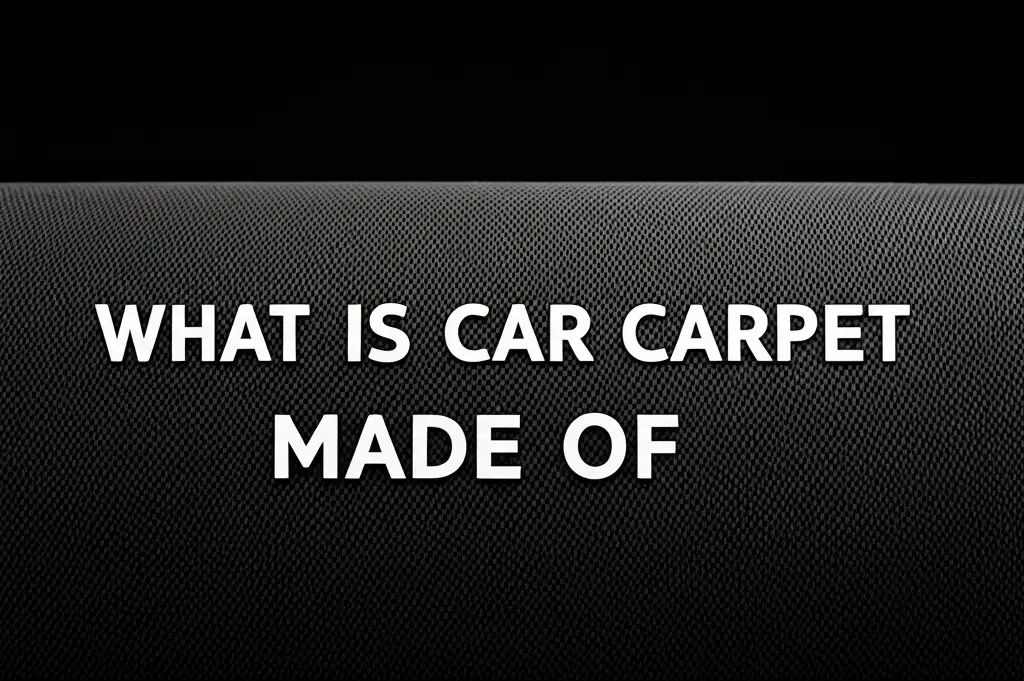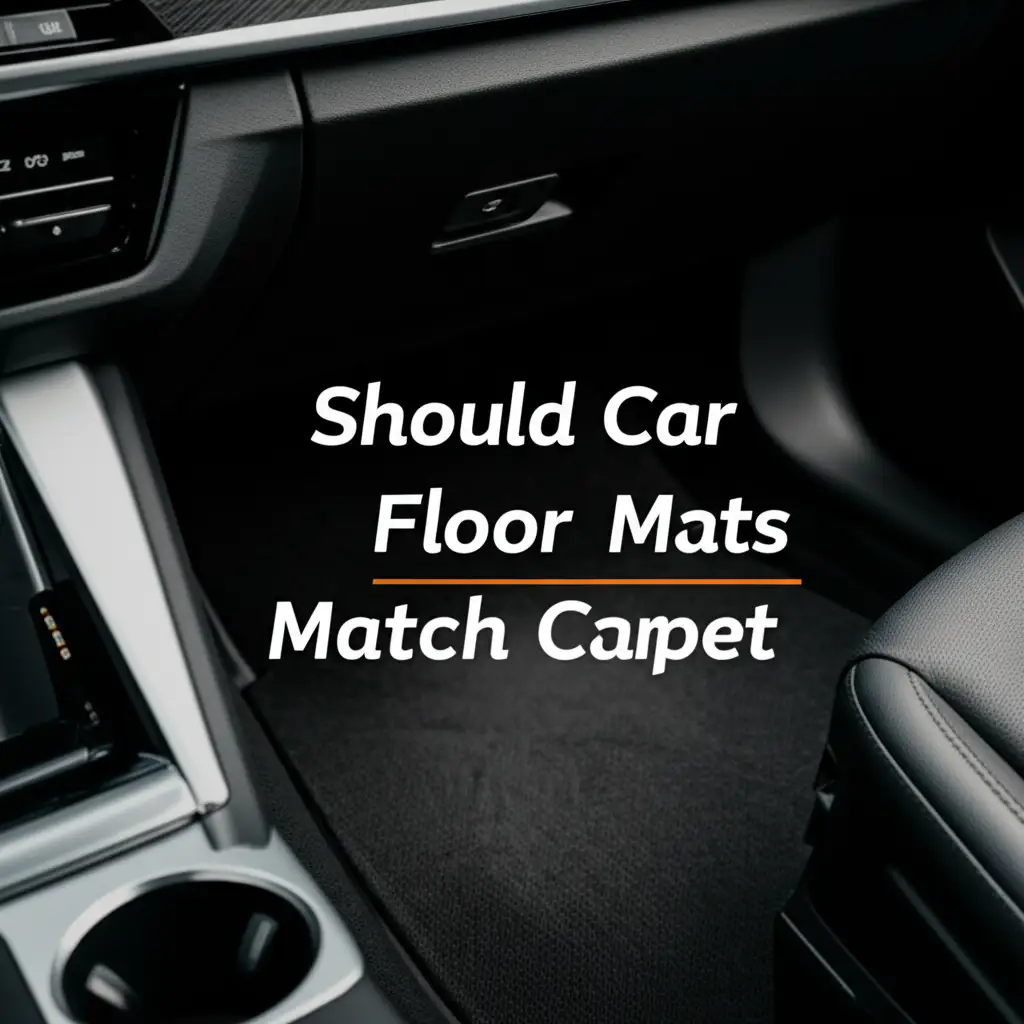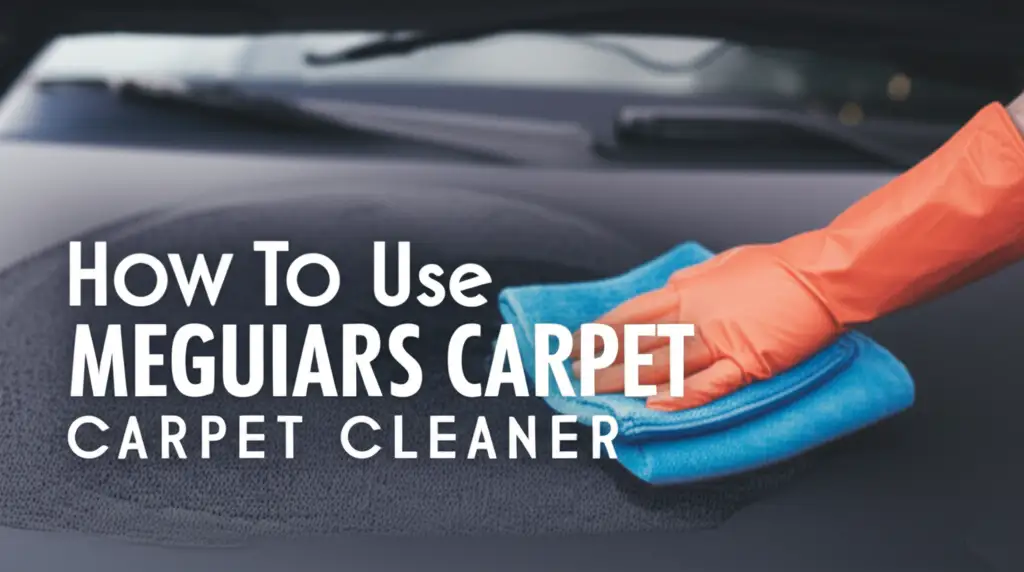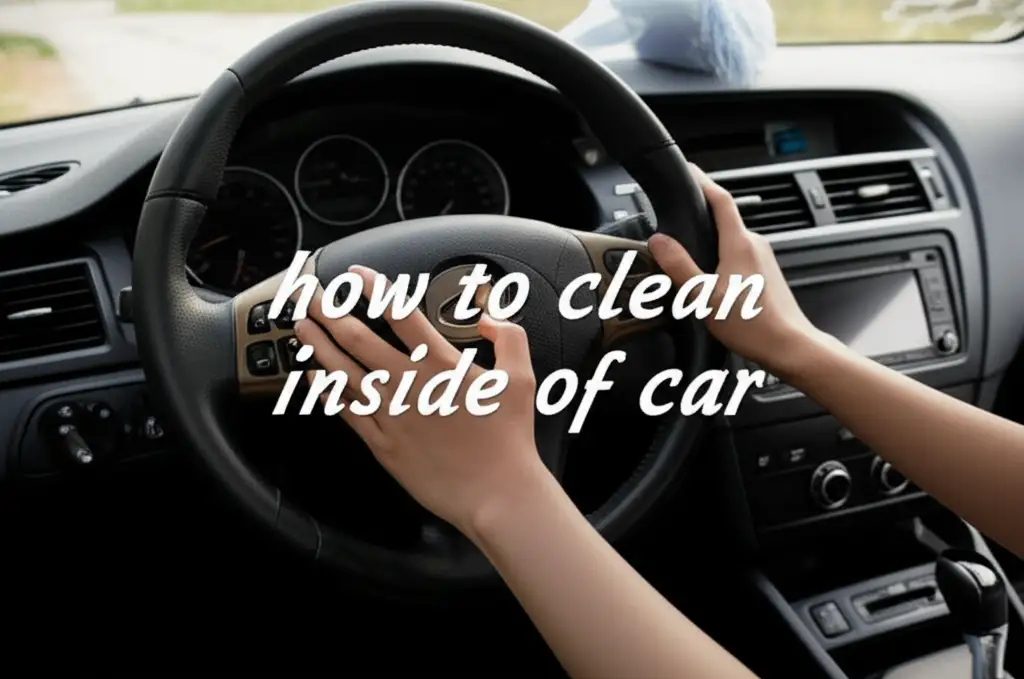· Elira Thomsen · Car Care · 16 min read
What Is Car Carpet Made Of

What Is Car Carpet Made Of? Materials & Durability Explained
Stepping into your car, the first thing your feet touch is often the carpet. We usually do not think much about it, but this car carpet serves many purposes. It offers comfort, adds to the car’s looks, and protects the floor. Understanding what car carpet is made of can help you take better care of it. It also lets you know why some carpets last longer than others.
This article will look into the specific materials used for car carpets. We will discover their unique construction and the reasons behind material choices. I will also share tips on how to keep your car carpet looking good and lasting a long time. Come with me as we explore the hidden world beneath your feet in the car.
Takeaway
- Carpet in your car is often made from durable synthetic fibers like nylon or polypropylene.
- These materials offer resistance to wear, stains, and moisture.
- Automotive carpet has a unique construction, including a robust backing for sound dampening and insulation.
- Proper cleaning and protection extend the life and look of your car’s interior carpet.
What is car carpet made of?
Car carpet is primarily made from synthetic fibers such as nylon or polypropylene. These materials are chosen for their durability, resistance to stains and wear, and ability to withstand harsh conditions. The carpet also includes a robust backing layer, often made from rubber or felt, which provides sound deadening and insulation.
Understanding Common Materials Used for Car Carpet
The materials used in car carpet are key to its performance. Unlike home carpets, automotive carpets face extreme conditions. They deal with direct sunlight, wide temperature changes, and constant foot traffic. This means material selection is very important.
Nylon: A Top Choice
Nylon is a popular fiber for car carpet. It is known for its excellent durability. Nylon fibers can resist abrasion well. They also stand up to crushing. This means the carpet keeps its shape even after heavy use. Nylon car carpet often has a soft feel underfoot. It can also be dyed in many colors, which offers design flexibility. This material resists fading from the sun better than some other fibers.
Polypropylene (Olefin): The Workhorse
Polypropylene, also called olefin, is another common material for car carpet. It is highly resistant to moisture. This makes it a great choice for areas that might get wet. Polypropylene also resists stains very well. Most spills sit on top of the fiber instead of soaking in. This makes cleaning much easier. While not as soft as nylon, it is a cost-effective and practical option for many car models.
Polyester: Good for Recycling
Polyester is also used, especially in more modern or eco-friendly car carpets. It offers good stain resistance and color retention. Polyester can also be made from recycled plastic bottles. This makes it an environmentally conscious choice. It might not be as durable as nylon for very heavy traffic, but it still performs well for general automotive use.
Other Less Common Fibers
Some specialty car carpets might use other fibers. These could include blends with natural fibers for a unique feel or appearance. However, synthetic fibers dominate the automotive carpet market. Their engineered properties simply match the demands of car interiors best. Each fiber offers a different balance of durability, stain resistance, feel, and cost. Car manufacturers select materials based on vehicle segment and desired interior quality.
The Unique Construction of Automotive Carpet
Carpet in a vehicle is not just a simple piece of fabric. It has a specific construction designed for the demanding automotive environment. This construction gives it strength, sound control, and insulation properties. Understanding these layers helps you appreciate its function.
The Face Fiber
The top layer you see and touch is the face fiber. This is where the nylon, polypropylene, or polyester fibers are. These fibers are looped or cut to create the pile. Car carpet typically has a low, dense pile. This low pile resists matting and wear from shoes. It also makes cleaning easier, as dirt does not get trapped as deeply. The density of the pile contributes to the carpet’s overall look and feel.
Primary Backing
Below the face fiber is the primary backing. This layer holds the fibers in place. It is usually a woven material like polypropylene. The fibers are tufted through this primary backing. This strong foundation ensures the loops or cut ends remain secure. A good primary backing prevents the carpet from unraveling or losing fibers over time. It provides initial stability to the carpet structure.
Secondary Backing
The secondary backing is crucial for automotive carpet. This layer is often made of rubber or a heavy felt material. It is laminated to the primary backing. The secondary backing provides several benefits. It adds significant weight and stiffness to the carpet. This helps the carpet lay flat and stay in place in the car. It also acts as a crucial moisture barrier. This prevents spills from reaching the vehicle”s metal floor. Drying matting under a carpet in a car is important to prevent mold if moisture does get through.
Sound Deadening and Insulation
Many automotive carpets integrate an additional layer for sound deadening and insulation. This layer is often a thick felt or rubberized material. It sits between the carpet and the car’s metal floor. This material absorbs road noise and engine sounds. It also helps regulate the car’s interior temperature. This reduces the need for heating or air conditioning, making the ride more comfortable. The entire layered construction works together. It provides comfort, protection, and a quieter ride inside your car.
Why Specific Materials are Chosen for Car Carpet
Car manufacturers do not pick carpet materials randomly. They choose materials based on very specific performance needs. These needs are much different from those of a home carpet. The environment inside a car is unique. It demands materials that can handle tough conditions.
Durability and Wear Resistance
One of the main reasons for material choice is durability. Car carpets endure constant foot traffic. Shoes bring in dirt, grit, and moisture. Materials like nylon and polypropylene stand up to this abuse very well. They resist crushing and abrasion. This helps the carpet maintain its appearance over years of use. A durable car carpet means less replacement and better long-term value.
Stain and Spill Resistance
Spills are common inside cars. Coffee, soda, and food can easily end up on the floor. Car carpet materials must resist staining. Polypropylene is especially good at this. Its fibers are less absorbent than natural fibers. This means liquids tend to bead on the surface. This gives you more time to clean up spills before they set. How to get coffee spill out of carpet is a common search for good reason. Choosing a material that resists stains makes car ownership easier.
Fade Resistance from UV Light
Cars spend a lot of time in the sun. The sun’s UV rays can cause colors to fade. Automotive carpet materials are often treated or engineered to resist UV degradation. This helps the car’s interior maintain its original color. A faded carpet can make the whole interior look old. Good fade resistance ensures the carpet looks new for longer.
Mold and Mildew Resistance
Moisture can get trapped in car carpets. This can happen from rain, snow, or spilled drinks. If the carpet stays wet, mold and mildew can grow. This creates bad odors and can damage the carpet. Synthetic fibers like polypropylene naturally resist moisture absorption. This makes them less prone to mold and mildew growth. This is important for health and for keeping the car smelling fresh. Materials are chosen to ensure a healthy and pleasant car environment.
Beyond the Fibers: Backing and Padding
The face fibers are only one part of the car carpet story. What lies beneath these fibers is just as important. The backing and padding layers give the carpet its strength, stability, and functional benefits. They are vital for how the car carpet performs and lasts.
The Role of Primary Backing
As discussed, the primary backing is where the fibers are attached. It is usually a strong, woven synthetic fabric. This layer provides the initial structure for the carpet pile. It must be strong enough to hold thousands of individual fibers securely. If the primary backing is weak, the carpet can shed fibers. It might also show bare spots over time. This layer ensures the integrity of the carpet’s surface.
The Importance of Secondary Backing
The secondary backing adds significant bulk and function. This layer is often made of rubber, latex, or a blend of polymers. It is bonded to the primary backing. This creates a very stable and durable carpet. The secondary backing makes the carpet lay flat. It prevents curling or shifting inside the car. A thick secondary backing also improves sound insulation. It blocks road noise from entering the cabin. This makes your ride quieter and more enjoyable. It also acts as a critical moisture barrier, protecting the vehicle’s floor pan from spills.
Underlay and Padding (Under-Carpet Flooring)
Some cars, or replacement carpet kits, might include or allow for additional underlay or padding. This layer sits directly on the car’s metal floor, beneath the carpet. This extra padding provides enhanced comfort underfoot. It also boosts sound absorption, further reducing noise. Additionally, it adds more insulation against heat and cold. This layer is distinct from the carpet’s attached backing. It serves a similar purpose to what purpose of extra flooring under carpet serves in a home. This multi-layered approach ensures maximum performance and comfort for automotive carpet. Each layer has a specific job. Together, they create a highly functional floor covering for your vehicle.
Maintaining Your Car Carpet’s Longevity
Keeping your car carpet in good condition is simpler than you might think. Regular maintenance makes a big difference. It extends the carpet’s life and keeps your car’s interior looking fresh. Simple habits can prevent damage and deep stains.
Regular Vacuuming
Vacuuming is the most important step for carpet care. I make sure to vacuum my car carpet often. This removes loose dirt, dust, and small debris. If dirt sits on the carpet, it acts like sandpaper when walked on. This causes fibers to wear down faster. A strong vacuum with good suction pulls out embedded particles. For best results, use a brush attachment to agitate the fibers. This helps lift deeply settled dirt. Can sweep carpet everyday ruin it is a question often asked about home carpets, but for car carpets, daily vacuuming is usually not needed, though frequent is good.
Addressing Spills Quickly
Spills are inevitable in a car. Act fast when they happen. Blot the spill with a clean cloth, do not rub. Rubbing can push the liquid deeper into the fibers. For liquid spills, use a paper towel or an absorbent cloth. For solid spills, scoop up as much as possible first. Then, clean any residue. Prompt action prevents stains from setting.
Spot Cleaning Stains
For stubborn spots, use a dedicated car carpet cleaner. Always test the cleaner on a hidden area first. This ensures it does not discolor the carpet. Apply the cleaner to a cloth, then blot the stain. Work from the outside of the stain inwards. This stops the stain from spreading. Repeat the process until the stain is gone. Then, blot with a damp cloth to rinse. For how to clean carpet stains pets, specific enzymatic cleaners work best.
Using Floor Mats
Good quality floor mats protect your car’s main carpet. They catch most of the dirt, mud, and moisture from shoes. You can easily remove and clean floor mats. This protects the harder-to-reach areas of your car’s main carpet. Choose mats that fit well and have a good grip on the bottom. This prevents them from sliding around. Floor mats are an easy and effective way to prolong carpet life.
Innovations in Car Carpet Technology
The world of car carpet is not standing still. Manufacturers continue to develop new technologies. These innovations aim to make car carpets even better. They focus on improved performance, greater sustainability, and enhanced user experience.
Advanced Stain Protection
Newer car carpets often come with advanced stain protection treatments. These treatments create an invisible barrier on the fibers. This barrier repels liquids and makes cleaning spills even easier. Some technologies use nanotechnology to bond protective agents at a molecular level. This results in carpets that are highly resistant to water-based and oil-based stains. This means fewer worries about accidental spills.
Enhanced Sound Dampening Materials
Engineers are always looking for ways to make car interiors quieter. Innovations in carpet backing and underlay materials contribute greatly to this. New types of foam, felt, and rubber compounds are developed. These materials absorb sound waves more effectively. They reduce road noise, tire hum, and engine vibrations. This creates a more serene cabin environment. A quieter ride means less fatigue on long journeys.
Sustainable and Recycled Materials
Environmental concerns drive innovation in material sourcing. Many car manufacturers are now using recycled content in their carpets. Polyester fibers can come from recycled plastic bottles. Some backings use recycled rubber. This reduces waste and lowers the environmental footprint of car production. Companies are also researching bio-based polymers. These materials are made from renewable resources. They offer a more sustainable alternative to traditional synthetic fibers. This move towards green materials is a growing trend.
Anti-Microbial Treatments
To combat odors and microbial growth, some modern car carpets include anti-microbial treatments. These treatments inhibit the growth of bacteria, mold, and mildew. This is especially useful in humid climates or if moisture gets trapped. These treatments help keep the car’s interior smelling fresh and clean. This adds another layer of hygiene to your vehicle’s environment. These advancements show a commitment to improving car interiors. They make car carpets more durable, cleaner, and environmentally friendly.
Choosing the Right Carpet for Replacement or Customization
Whether you are replacing worn-out carpet or customizing your car’s interior, choosing the right carpet is important. The options available can significantly change your car’s look, feel, and even its value. Understanding your needs will guide your choice.
OEM vs. Aftermarket Carpet
You have two main choices when replacing car carpet: OEM (Original Equipment Manufacturer) or aftermarket. OEM carpets are direct replacements from the car’s manufacturer. They match the original carpet in material, color, and fit exactly. They are often more expensive but guarantee a perfect match. Aftermarket carpets are made by third-party companies. They can offer a wider range of colors, materials, and price points. While some aftermarket carpets are very high quality, fit can vary. Always check reviews and product specifications carefully.
Material Considerations
Revisit the material types discussed earlier. Consider your priorities:
- Durability: If your car sees heavy use, nylon offers superior wear resistance.
- Stain Resistance: For family cars or those prone to spills, polypropylene is an excellent choice due to its non-absorbent nature.
- Budget: Polypropylene often provides a good balance of performance and affordability.
- Luxury/Feel: Some premium aftermarket options might offer softer blends or unique textures for a luxurious feel.
Carpet Style and Pile
Car carpet usually has a low, dense pile. This is for durability and ease of cleaning. You can choose cut pile or loop pile. Cut pile has a softer, more plush look. Loop pile is very durable and resists crushing. Consider if you want a subtle texture or a smoother finish. Color choice is also important. Darker colors hide dirt better but can make the interior feel smaller. Lighter colors can brighten the space but show stains more easily.
Installation Type
You can buy carpet in pre-molded sections or as a roll. Pre-molded carpet is cut and shaped to fit your specific car model. This makes installation easier for DIYers. Installing a full roll of carpet requires cutting and trimming to fit. This is more difficult and usually requires professional help. Some suppliers also offer carpet squares or mats for specific areas. The choice depends on your skill level and how much of the carpet you want to replace. Proper installation is key. A well-installed carpet looks good and performs its best.
Frequently Asked Questions
Is car carpet the same as home carpet?
No, car carpet is different from home carpet. Car carpet uses more durable, tightly woven synthetic fibers like nylon or polypropylene. It has a heavy, often rubberized, backing for sound deadening and moisture resistance. Home carpet is softer, has a taller pile, and lighter backing, designed for different wear patterns and indoor environments.
Can I replace my car carpet myself?
Yes, you can replace car carpet yourself, but it requires patience and some tools. Many companies sell pre-molded carpet kits specifically for different car models. This makes the process simpler. However, it involves removing seats, console parts, and old carpet. DIY replacement can save money, but professional installation ensures a perfect fit.
How often should I clean my car carpet?
You should vacuum your car carpet at least once a month, or more often if you drive frequently or have pets. Deep cleaning with a carpet extractor or shampoo should be done every 6-12 months. Regular cleaning prevents dirt buildup and helps maintain the carpet’s appearance and lifespan.
What’s the best way to protect car carpet?
The best way to protect car carpet is to use good quality floor mats. Look for mats that are durable, easy to clean, and fit your car well. Rubber floor mats offer excellent protection against dirt and moisture. You can also apply a fabric protectant spray to the carpet for added stain resistance.
Does car carpet help with sound?
Yes, car carpet plays a significant role in sound deadening. Its dense fibers and, more importantly, its heavy secondary backing absorb sound waves. This reduces road noise, engine sounds, and vibrations from entering the cabin. This makes the car interior quieter and more comfortable for occupants.
Are all car carpets stain-resistant?
Most modern car carpets are designed to be stain-resistant, especially those made from polypropylene. However, no carpet is entirely stain-proof. Stain resistance means the carpet repels liquids and makes cleanup easier. Prompt action on spills is still necessary to prevent permanent staining.
Conclusion
Car carpet is more than just a floor covering. It is a carefully engineered component of your vehicle. We have learned that “what is car carpet made of” typically involves durable synthetic fibers. These include nylon, polypropylene, or polyester. These materials are chosen for their strength, stain resistance, and ability to handle harsh conditions. The unique layered construction, including the robust backing, adds sound deadening and insulation benefits.
I hope understanding these details helps you appreciate your car’s interior. Knowing about the materials helps you care for your car carpet better. Regular vacuuming and quick spill clean-up keep it looking new. Using floor mats is a simple way to protect it. Remember, a well-maintained car carpet makes your car feel cleaner and more comfortable. It also keeps your car looking great for a long time. So, give your car carpet the attention it deserves. Your car will thank you for it!





